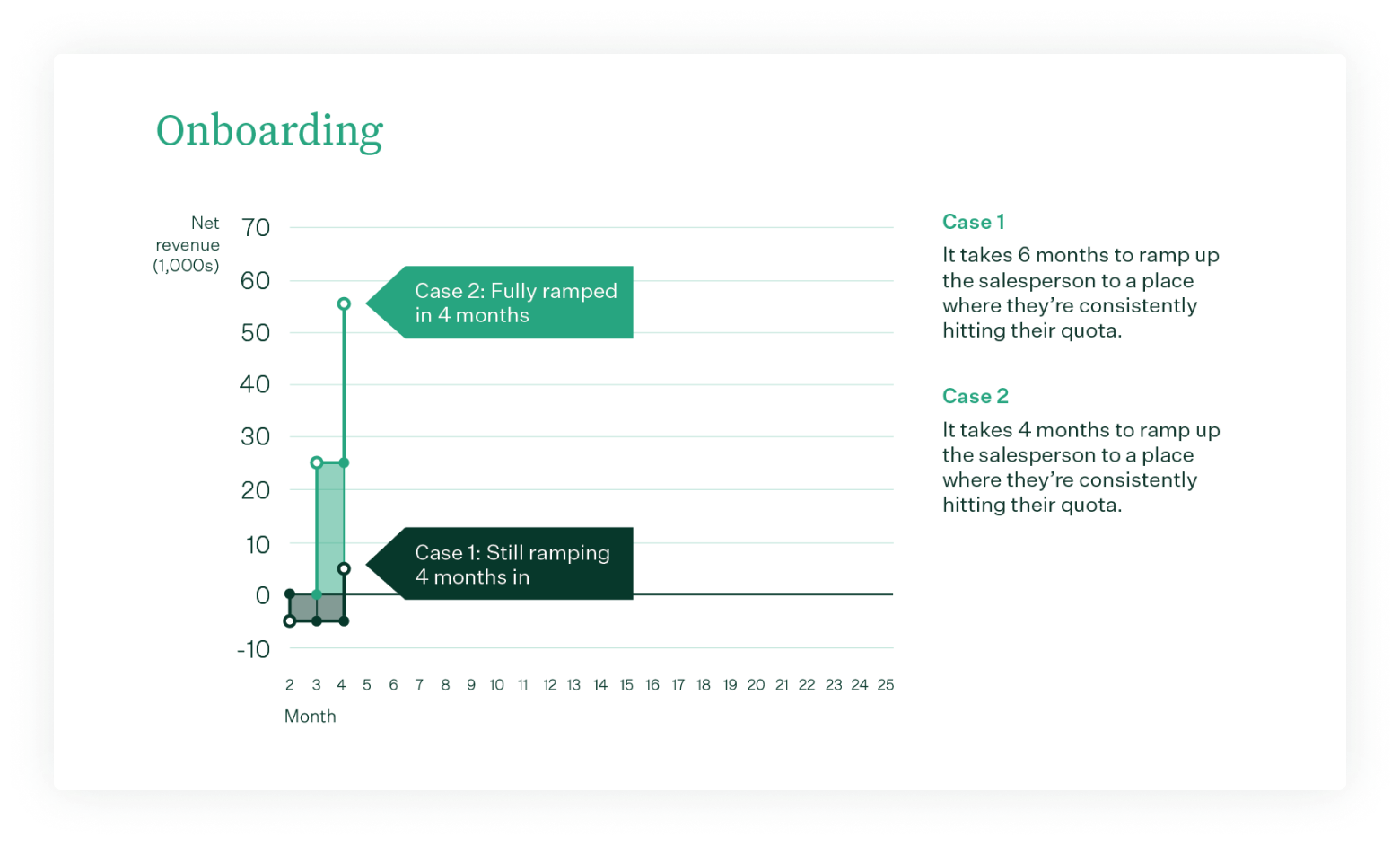The $1m difference between good and great people practices: A case study

In my last post, I explained which People Practices have the greatest impact on employees: onboarding, hiring, talent management and development, and culture. Making even small improvements in these programs can significantly increase Employee Lifetime Value (ELTV)—the total net value over time that an employee brings to an organization.
To demonstrate the impact of these practices on ELTV, let’s walk through a case study involving two distinct scenarios. To demonstrate how much impact even small improvements can have, I’ll use conservative assumptions for each input. In reality, the differences can actually be much greater. See my last post for supporting data on these assumptions.
Case 1
A normal organization with average People Practices
Case 2
An organization with slightly better, more optimized People Practices
We’ll use salespeople for our scenarios, as their output is more directly measurable than many other roles. Let’s assume that in both Scenario 1 and Scenario 2 the salespeople have salaries of $60,000 and yearly quotas of $600,000. This translates to $5,000/mo in salary and $50,000/mo in potential revenue. Their projected output per month is $50,000 of revenue less their salary of $5,000, resulting in $45,000 net revenue per month.
Impact of onboarding
Conservative assumption: A better onboarding program that encompasses pre-boarding, new hire experience, and training can decrease an employee’s ramp time by 30%.

Impact of hiring
Conservative assumption: A better hire—which can be achieved by taking a structured and data-driven approach to sourcing, interviewing, and closing—can outperform a peer by 20%.

Impact of management and development
Conservative assumption: Great management and development practices that involve coaching and training can improve an employee’s performance by 20% in a year.

The million-dollar revelation
As shown below, if we continue the graph out over three years and assume that it takes 4 months to backfill the salesperson in scenario 1, the relative difference in ELTV becomes staggering. In the case study we walked through, the difference between average and slightly optimized People Practices for one salesperson over the course of three years is $1,300,000 in net revenue, or a 2.5x difference for the organization.

In next week’s post, I’ll extend this case study to show you the impact of a mis-hire on ELTV, as well as apply ELTV to a role with a less measurable output than sales.
If you’re interested in reading ahead, you can check out the ELTV eBook we put together which has the full white paper and an interactive proposal template for making the ROI case to your management team.

